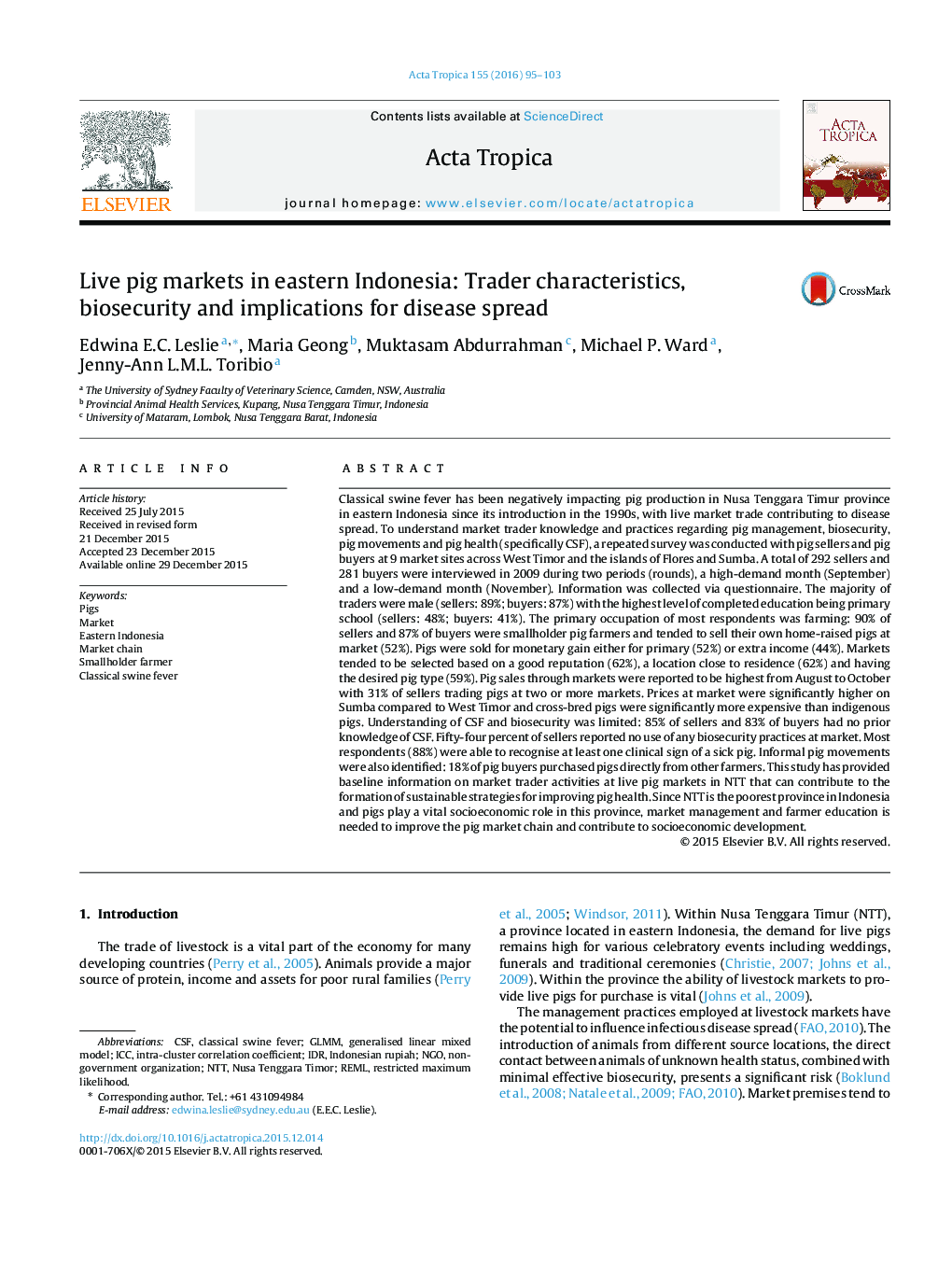| کد مقاله | کد نشریه | سال انتشار | مقاله انگلیسی | نسخه تمام متن |
|---|---|---|---|---|
| 3393775 | 1592769 | 2016 | 9 صفحه PDF | دانلود رایگان |
• Repeated questionnaire surveys conducted at live pig markets in eastern Indonesia.
• Majority of market traders were also smallholder pig farmers.
• Pig sales through live markets were highest from August to October.
• Pig prices were significantly higher on Sumba in comparison to West Timor.
• Traders had minimal knowledge of biosecurity and specifically classical swine fever.
Classical swine fever has been negatively impacting pig production in Nusa Tenggara Timur province in eastern Indonesia since its introduction in the 1990s, with live market trade contributing to disease spread. To understand market trader knowledge and practices regarding pig management, biosecurity, pig movements and pig health (specifically CSF), a repeated survey was conducted with pig sellers and pig buyers at 9 market sites across West Timor and the islands of Flores and Sumba. A total of 292 sellers and 281 buyers were interviewed in 2009 during two periods (rounds), a high-demand month (September) and a low-demand month (November). Information was collected via questionnaire. The majority of traders were male (sellers: 89%; buyers: 87%) with the highest level of completed education being primary school (sellers: 48%; buyers: 41%). The primary occupation of most respondents was farming: 90% of sellers and 87% of buyers were smallholder pig farmers and tended to sell their own home-raised pigs at market (52%). Pigs were sold for monetary gain either for primary (52%) or extra income (44%). Markets tended to be selected based on a good reputation (62%), a location close to residence (62%) and having the desired pig type (59%). Pig sales through markets were reported to be highest from August to October with 31% of sellers trading pigs at two or more markets. Prices at market were significantly higher on Sumba compared to West Timor and cross-bred pigs were significantly more expensive than indigenous pigs. Understanding of CSF and biosecurity was limited: 85% of sellers and 83% of buyers had no prior knowledge of CSF. Fifty-four percent of sellers reported no use of any biosecurity practices at market. Most respondents (88%) were able to recognise at least one clinical sign of a sick pig. Informal pig movements were also identified: 18% of pig buyers purchased pigs directly from other farmers. This study has provided baseline information on market trader activities at live pig markets in NTT that can contribute to the formation of sustainable strategies for improving pig health. Since NTT is the poorest province in Indonesia and pigs play a vital socioeconomic role in this province, market management and farmer education is needed to improve the pig market chain and contribute to socioeconomic development.
Journal: Acta Tropica - Volume 155, March 2016, Pages 95–103
